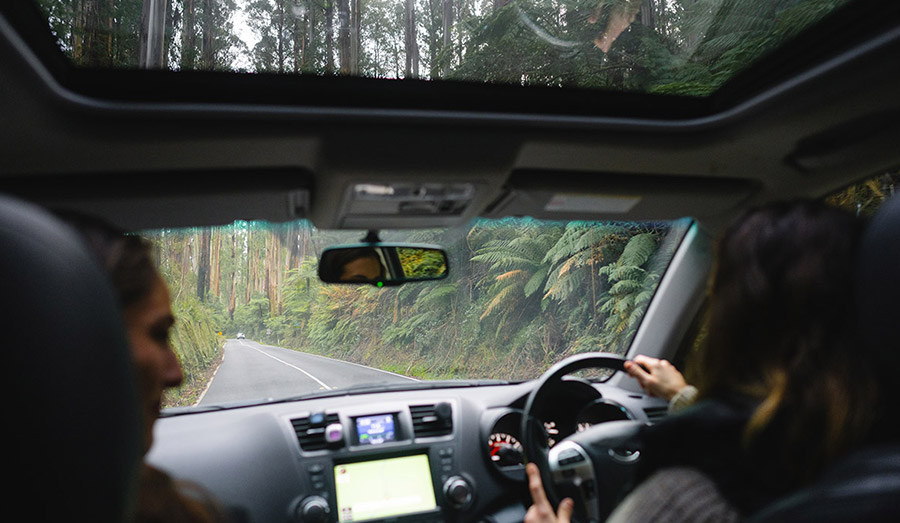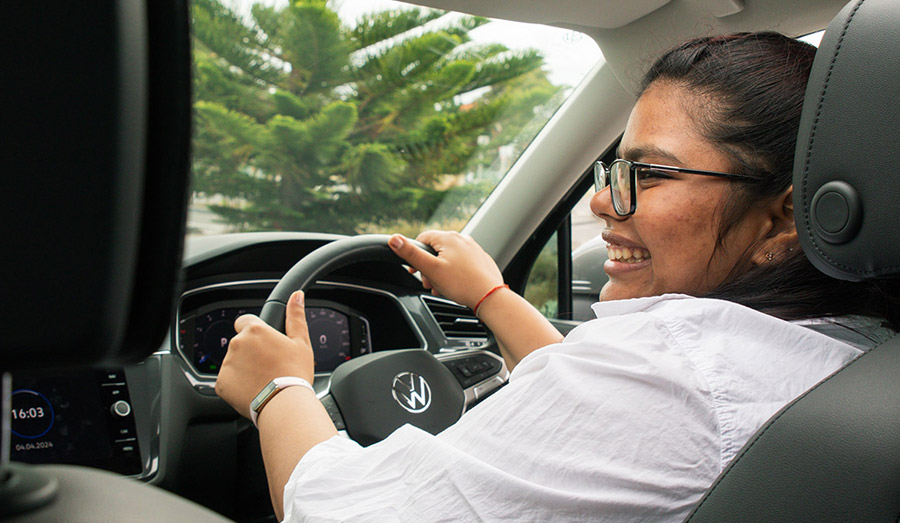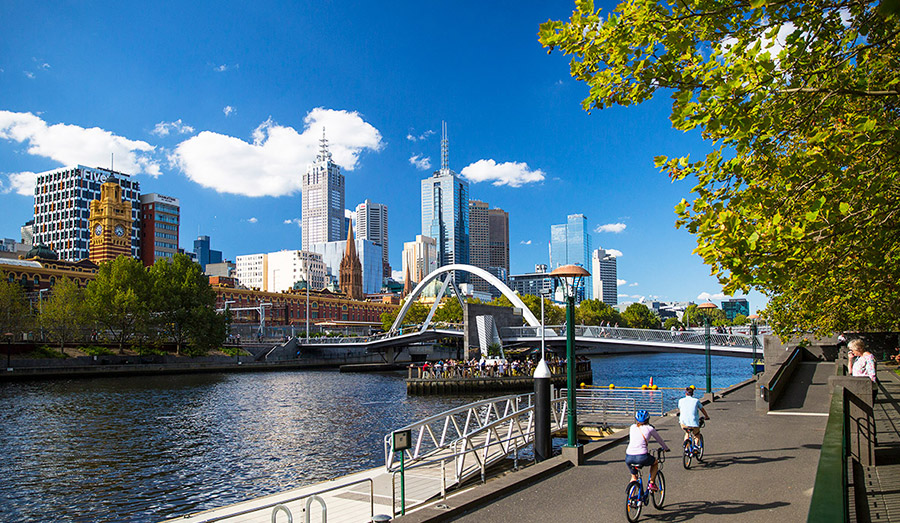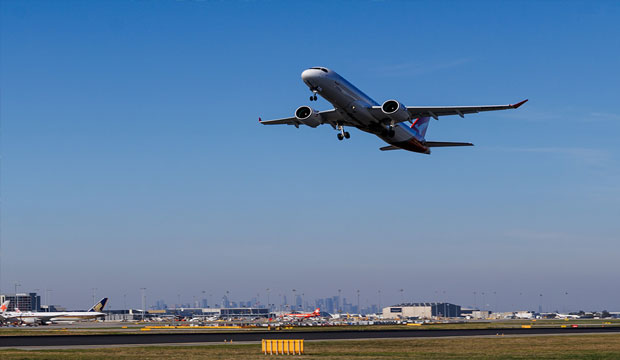There are so many great reasons to choose Melbourne as your international study destination, one of which is its amazing public transport. With a well-planned and efficient system, public transport in Melbourne is both easy and affordable.
View transcript
Transcript
[On-screen text: Alvin, International student]
Alvin: Known for its well-planned and efficient system, public transport in Melbourne is both easy and affordable. Plus, if you're travelling to country Victoria, there are a range of different public transport options to explore regional cities and attractions.
Figuring out how to get around a new city can be challenging, let's cover on what you need to know about Melbourne's public transport system, exclusive international student discounts you may be eligible for, and the best navigation apps. In Melbourne, trams, buses and trains are popular transport options. With frequent services running across the city and surrounding suburbs, you'll have no problem getting around wherever you need to go.
With 24 routes, Melbourne's tram network is one of the biggest in the world. In Melbourne’s city centre, you'll find the Free Tram Zone, where you can travel on the tram for free. If you live in Melbourne's outer suburbs, where there are fewer trams, buses can be a great way to get around.
Melbourne's train network is perfect for longer trips between the city centre and surrounding suburbs. It is now the same price to travel from Melbourne to the regions as it is just to travel in Melbourne. A great excuse to go exploring!
If you're going to regional areas like Ballarat, Bendigo, Geelong or Gippsland, you can travel on the V/Line trains. myki is your ticket to travel on trains, trams, buses in Melbourne and many other parts of country Victoria. To get started, buy a myki from train stations, ticket machines, and convenience stores or use a digital wallet that is compatible with your Mobile myki.
As an international student, you may be eligible for an International Student Travel Pass, which offers a 50% discount on travel for full-time undergraduate international students studying at participating institutions. You can visit the Public Transport Victoria website for more details.
When it comes to navigating the public transport system, Public Transport Victoria and V/Line have their own apps which you can use to plan your journey.
For when you need a private vehicle, or want to get around the city quickly, there are also plenty of choices, including taxi, rideshare, e-bikes and e-scooters.
Visit the Study Melbourne website for more details on all these transport options.
[End transcript]
Ticketing and transport passes
To use public transport in Melbourne, you'll need a myki card. This can be used on all trains, trams and buses, as well as on some regional services.
You can purchase a myki card from train stations, ticket machines and some convenience stores. Once you have your myki card, you'll be able to use this by tapping it to the readers on buses, trains and trams.
Save money on public transport with an International Student Travel Pass
Eligible students can get a 50% discount and can save over $1000*. State-wide passes can be purchased so you can travel across Victoria for the same price as within Melbourne. The Pass is available in three versatile options - 90 days, 180 days or 365 days to suit your preference.
To be eligible, you must be an undergraduate international student studying full-time at an institution that's participating in the program. To check if you are eligible go to the PTV website.
View transcript
[Inspiring music, visuals of students at Melbourne Central promoting myki card]
Speaker 1: Are you an international undergraduate student? Come on down to Melbourne Central to find more about International Student Travel Pass.
Speaker 2: That you can get if you're an international student for 50% off. Come down here to Melbourne Central.
Speaker 1: We're here from Monday to Friday here at the tower.
Speaker 2: So come down, say hi. Grab a freebie, and then you can learn more about if you're eligible for the pass.
[On-screen logo]
Study Melbourne
[End transcript]
It’s important to remember that travelling without a valid ticket or failing to touch on when you board can lead to serious fines, so make sure you follow the rules when using public transport in Melbourne.
The fares you'll pay on Melbourne's public transport depend on how far you’re travelling and your ticket type. The public transport network is separated into three zones:
- The Free Tram Zone
- Zone 1
- Zone 2
If you're travelling to or within the outer suburbs, you may only need to pay the Zone 2 fare, while travelling in the city or between zones means you'll pay for travel in both Zone 1 and 2. Purchasing a Zone 1 and 2 ticket will allow you to travel anywhere in Victoria.
You can learn more about Zones via Transport Victoria and discover which zone your nearest stop or station is in, here. Simply navigate the page depending on your preferred method of transport, enter your stop and route details, and the system will generate the information you need, including your Zone number.
Trams, buses and trains
Trams, buses and trains are popular transit choices in Melbourne. With frequent services running across the city and surrounding suburbs, you’ll have no problem getting wherever you need to go.
Trams
Melbourne's trams aren't just an icon of this great city - they also play a vital role in the transport network. With 24 routes, Melbourne’s tram network is one of the biggest in the world.
Plus, thanks to the Free Tram Zone, you can travel on trams within the city centre for free. If you're doing some sightseeing, the City Circle Tram offers a free hop-on-hop-off service that will take you on a guided tour around Melbourne’s biggest sights and attractions.
Trams run every seven to 10 minutes during peak times and every 20-30 minutes during off-peak hours.
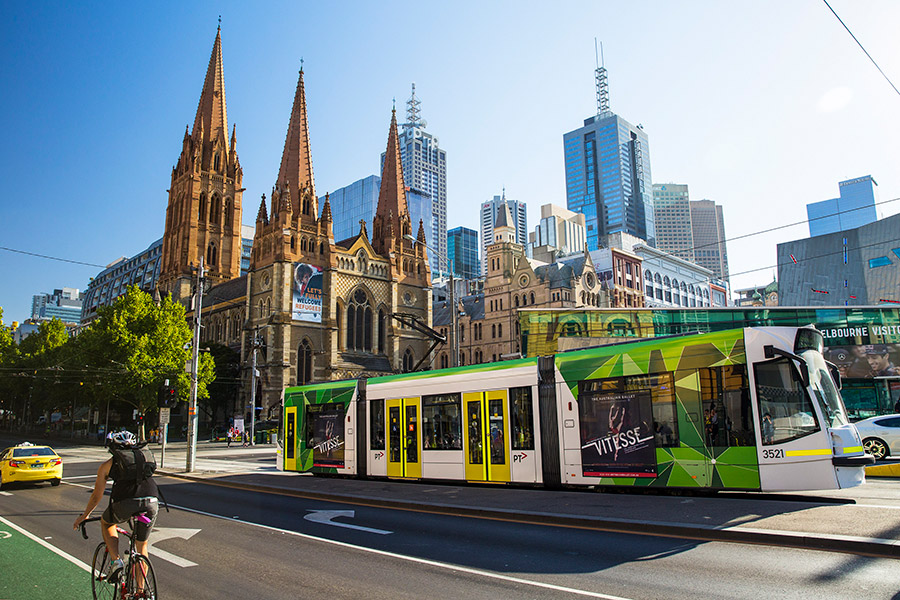
Buses
Melbourne also offers a great bus network that makes it easy to get in and around Melbourne's outer suburbs.
On busy routes and during peak hours, you can expect most buses to arrive every 10-15 minutes. On quieter routes or during off-peak times, buses will usually arrive every 20-30 minutes.
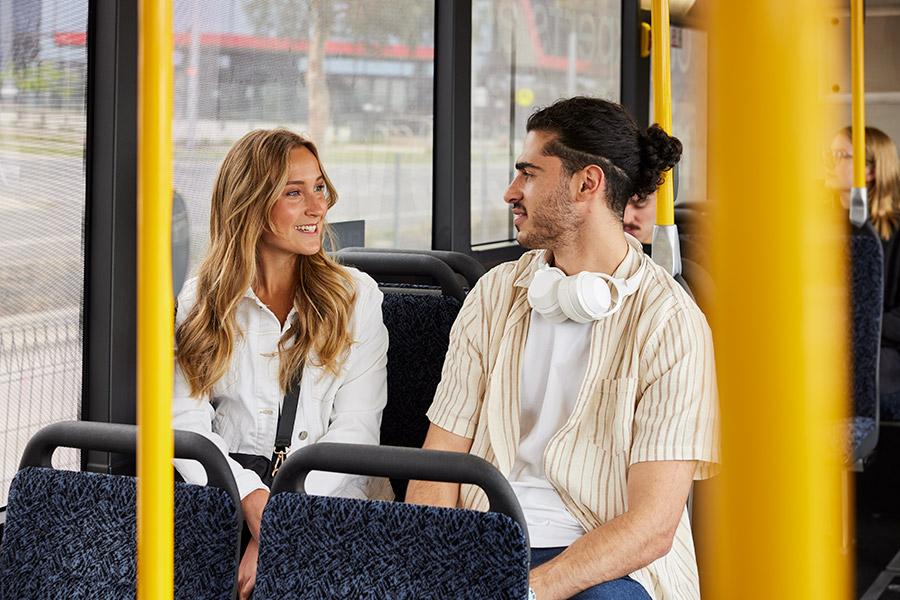
Trains
You’ll also have the option of using Melbourne’s great train network, which is run by Metro Trains. Trains are a great choice for longer trips between Melbourne and surrounding suburbs.
Trains run from 5am to midnight every day, with services offered every 4 to 5 minutes during peak hours and every 20 minutes during off-peak times.
Students travelling from Melbourne to regional areas will use the V/Line train network, which connects passengers to regional cities including Ballarat, Bendigo, Geelong and Seymour. You can use your myki card on some lines but will need to purchase a paper ticket for certain destinations, such as Albury, Shepparton and Warrnambool.
Night Network
If you are staying out after midnight, on Fridays and Saturdays, you can get home using the Night Network. The Night Network runs all-night services on select train, tram and bus lines throughout Melbourne. The Night Network also operates between Melbourne and regional cities including Ballarat, Bendigo and Geelong.

Page last updated:

